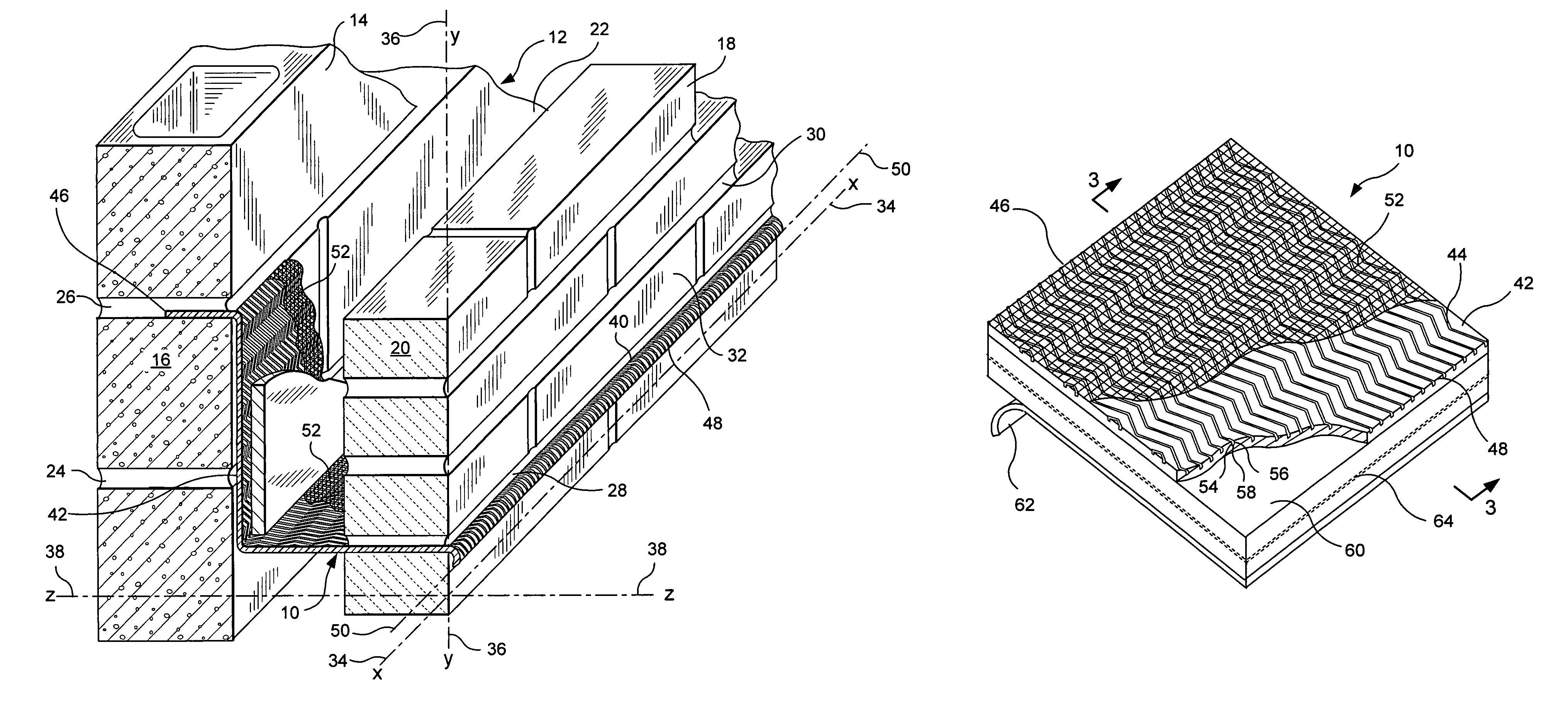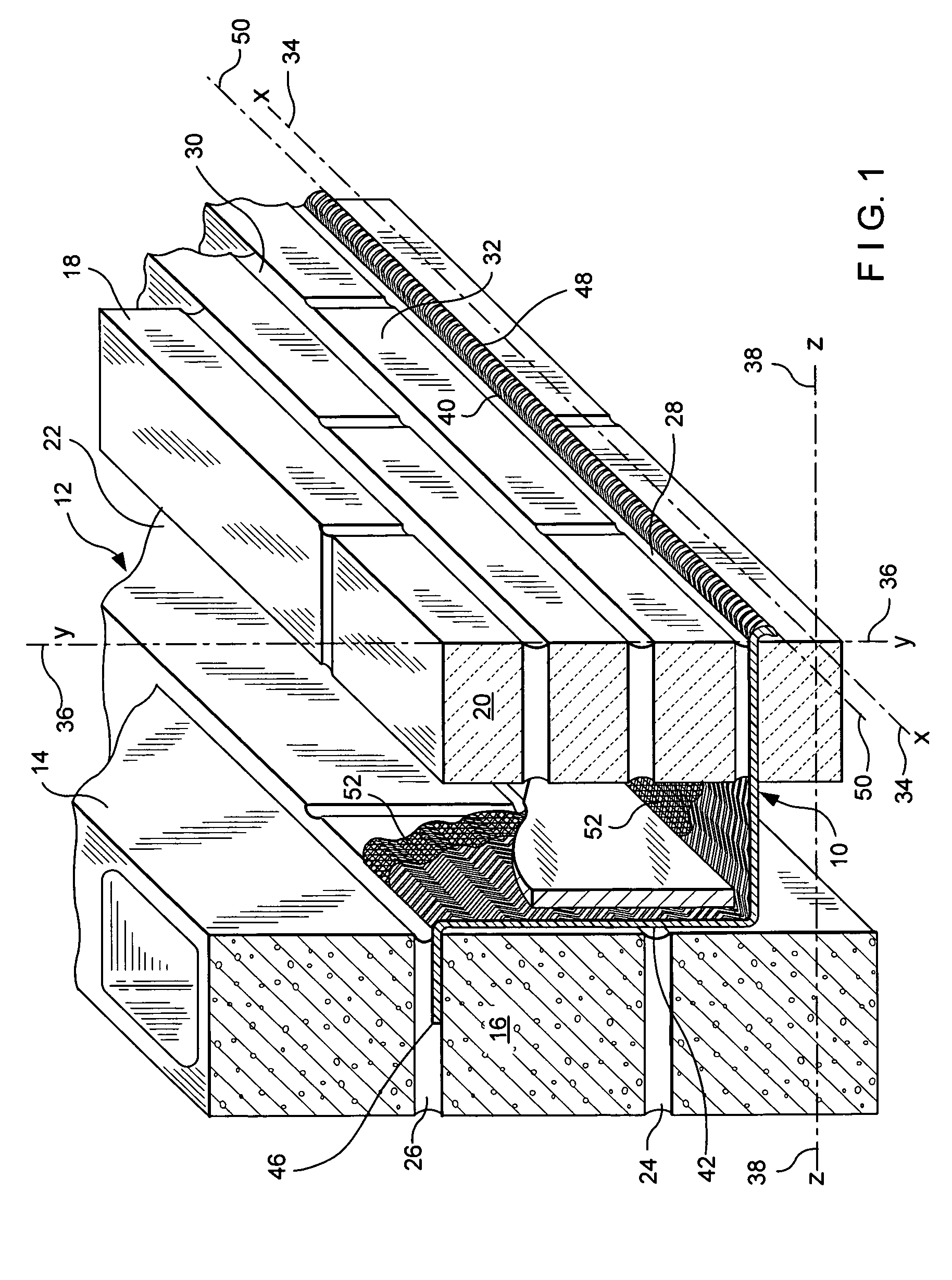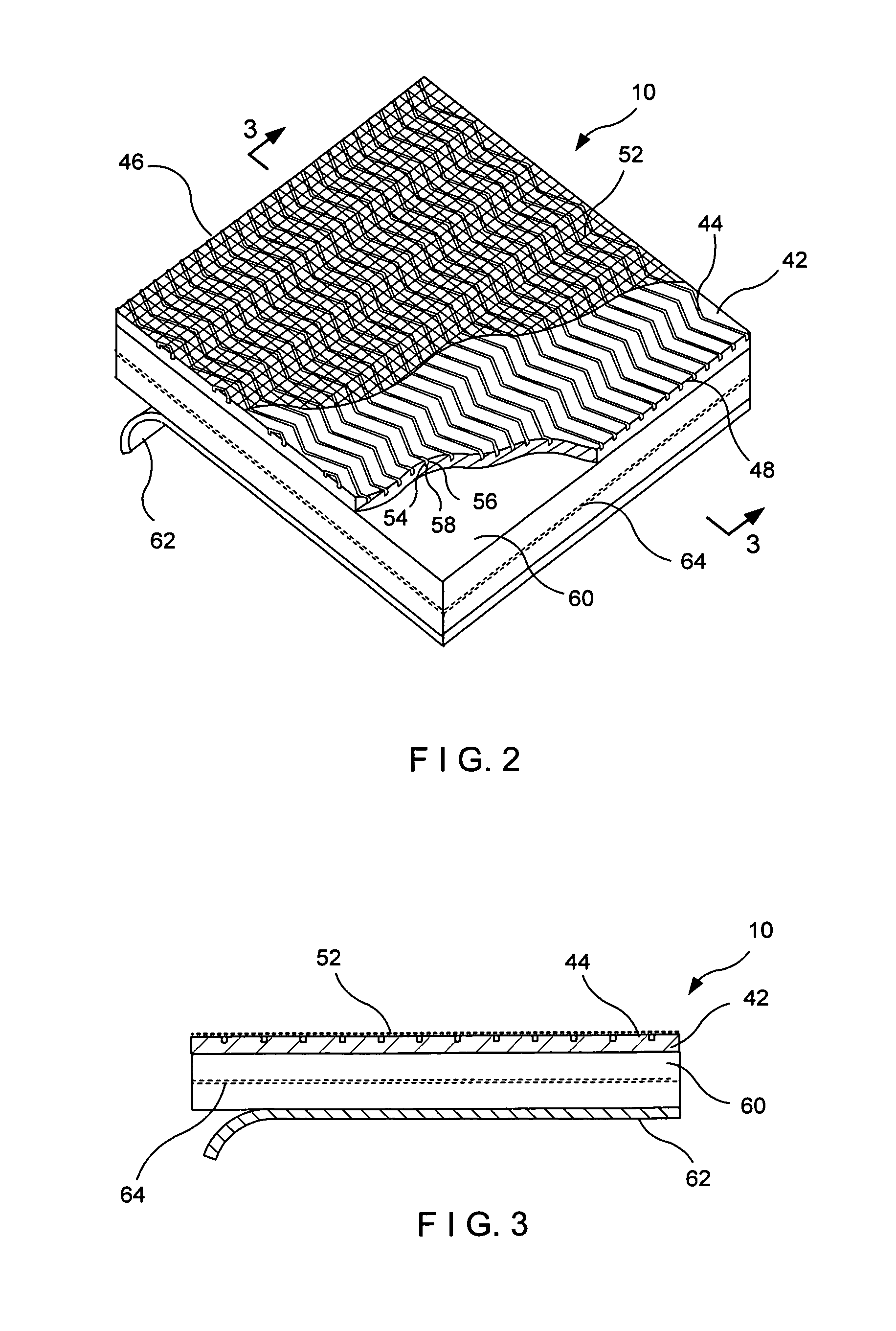Channeled masonry flashing
- Summary
- Abstract
- Description
- Claims
- Application Information
AI Technical Summary
Benefits of technology
Problems solved by technology
Method used
Image
Examples
first embodiment
[0058]Referring how to FIGS. 1 through 3, this invention in which a channeled flashing assembly or masonry flashing structure referred to generally by the reference designator 10 is shown. In this embodiment, a cavity wall structure 12 is shown having an inner wythe 14 of masonry blocks 16 and an outer wythe 18 of facing brick 20. Between the inner wythe 14 and the outer wythe 18, a cavity 22 is formed. Successive bed joints 24 and 26 are formed between courses of blocks 16 and the joints are substantially planar and horizontally disposed. Also, successive bed joints 28 and 30 are formed between courses of bricks 20 and the joints are substantially planar and horizontally disposed. For the through-wall-mounted flashing installation of this embodiment the flashing 10 is shown extending into bed joint 26 of the inner wythe 14 and through bed joint 28 of the outer wythe 18.
[0059]For purposes of this discussion, the exterior surface 32 of the outer wythe 18 contains a horizontal line or...
second embodiment
[0080]The adhesive layer 160 of the second embodiment is an admixture of a hot melt adhesive (adapted as described above for sufficient tack) and a butylated adhesive. The latter is present in the total mixture in the range of 5 to 40 percent. In the present case, a 75 percent hot melt adhesive and a 25 percent butylated adhesive mixture provides a non-drool adhesive layer 148 which, upon curing, has a melting point of 225 degrees F. This aspect, when the melting point is above 200 degrees F., satisfies the stability requirement.
[0081]Referring now to FIGS. 7 through 9, the third embodiment of this invention in which a surface-mounted peel-and-stick channeled masonry flashing referred to generally by the reference designator 210, is shown. In this embodiment, similar parts to those of the first embodiment are referred to by reference designators 200 units higher than a similar part in the first embodiment. Thus, for example, the adhesive layer 60 in the first embodiment has an analo...
PUM
| Property | Measurement | Unit |
|---|---|---|
| Temperature | aaaaa | aaaaa |
| Fraction | aaaaa | aaaaa |
| Percent by mass | aaaaa | aaaaa |
Abstract
Description
Claims
Application Information
 Login to View More
Login to View More - R&D Engineer
- R&D Manager
- IP Professional
- Industry Leading Data Capabilities
- Powerful AI technology
- Patent DNA Extraction
Browse by: Latest US Patents, China's latest patents, Technical Efficacy Thesaurus, Application Domain, Technology Topic, Popular Technical Reports.
© 2024 PatSnap. All rights reserved.Legal|Privacy policy|Modern Slavery Act Transparency Statement|Sitemap|About US| Contact US: help@patsnap.com










